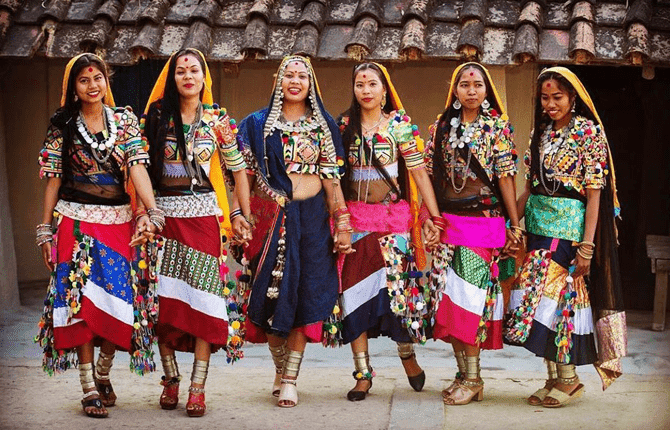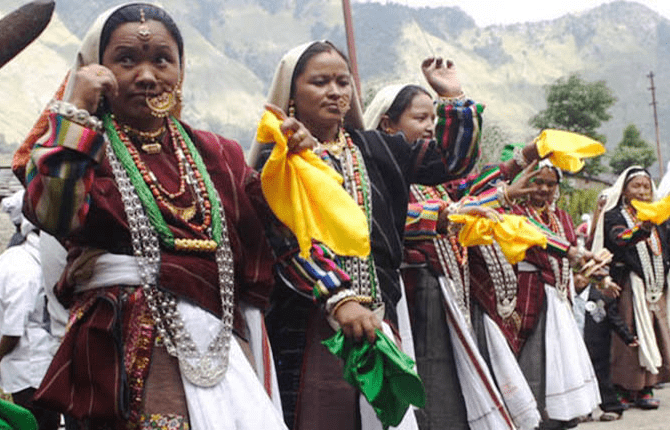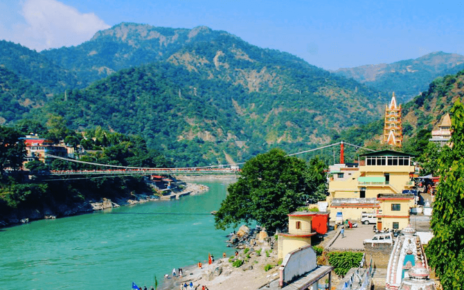Tribes of Uttarakhand represent the ethnic groups living in the state. Every district of Uttarakhand has a more or less moderate percentage of the tribal population. In the state of Uttarakhand, the main focus of the tribal population is in rural areas. According to the records, about 94.50 percent of the total tribal population resides in rural areas and the remaining percentage of tribal population resides in urban areas.
Uttarakhand have 5 major tribes identified by the Government of India. These are Tharu, Jaunsari, Buksa, Bhotia, and Raji. As of 2011 India census, Uttarakhand has a tribal population of 2,91,903, with Tharu being the largest tribe, followed by Jaunsari and Buksa.
Historical records show that the tribes of Uttarakhand are the earliest inhabitants of this region of North India. In the past, their main concentration was confined to remote mountainous and forested areas. The tribes of Uttarakhand have retained their old traditional ways of living. They represent the distinctive culture and traits of a primitive life. Their traditional norms and socio-cultural practices determine their ethnicity. They are mostly dependent on handicrafts and agriculture.
Tribes of Uttarakhand
1. Tharu Tribe of Uttarakhand

Tharu tribe is the largest tribal group of the state. The Tharu are the tribals of the eastern region of the Terai. They trace their ancestry to the native expatriate Tibetan tribes. Tharu people live in large families under one roof like joint families. A distinctive feature of Tharu culture is that their community has a matriarchal nature. Women have respectable position in the family and full right to run the household independently. Tharu has strong traditional panchayat organization to settle their disputes on the basis of a common code of conduct. Widow remarriage is also allowed.
2. Jaunsari Tribe of Uttarakhand

The Jaunsari tribe is the second largest tribal group of Uttarakhand. The entire population of the state is scattered all over the state with more than 356 villages. They inhibit Jaunsar-Bawar (Upper Dehradun district) and Rawain (present day Uttarkashi). This group has a distinctive style of dressing and special cultural upbringing. The Jaunsari community is recognized as one of the rare polyandry societies in the world.
Jaunsari are known to be Hindu but they do not worship Hindu deities. They have their own gods, the principal among them being Mahasu Devta.
3. Buksa Tribe of Uttarakhand

The next major tribal group of Uttarakhand is the Buksa tribe. The Buksa’s are residents of the Terai region of Uttarakhand and they claim their ancestry from the Rajputs. They have retained their age old traditional ways of living. The culture of the Buksa reflects a typical Hindu society but they also accept the existence of spirits of nature and eat meat. They are mainly spread over 173 villages in Nainital and Dehradun districts. However, the main concentration of Buksa tribe is found in Gadarpur, Ramnagar, Bajpur and Kashipur areas.
4. Bhotia Tribe of Uttarakhand

The Bhotia traditionally live in the heights of the Himalayas and are divided into several sub-groups, most notably the Jadhs, Marchas and Shaukas. These three groups have diverse cultures but have a common Tibeto-Mongoloid-like physical appearance. They are mostly found in Almora, Chamoli, Pithoragarh and Uttarkashi district of the state. Which are spread over 291 villages. The weaving of woolen yarns and the making of woolen goods such as carpets, blankets, sweaters and their traditional garments has been the specialty of the Bhotias.
5. Raji Tribe of Uttarakhand

Lastly, the Raji tribe is the smallest tribal group of Uttarakhand. The Raji are known as Vanrawat and they live in the forests around Askot in southern Pithoragarh. Raji also claims a matriarchal culture with women as the head of their community.
The Rajis have their own dialect which is quite different from the neighboring tribal and non-tribal communities. However, they can speak and converse in the Kumaoni-Pahari dialect as well as the broken Hindi language. Their wedding rituals are simple, without brahmins or priests. With the acceleration of development and communication with the outside world, Raji have struggled to maintain a way of life that they values greatly.
Suggested Read:
| Uttarakhand Culture: Garhwali & Kumaoni |
| Famous Folk Dances of Uttarakhand |
| 10 Food Dishes of Uttarakhand, You Must Taste |
| Fruits of Uttarakhand – A Delectable Taste From Devbhoomi |




